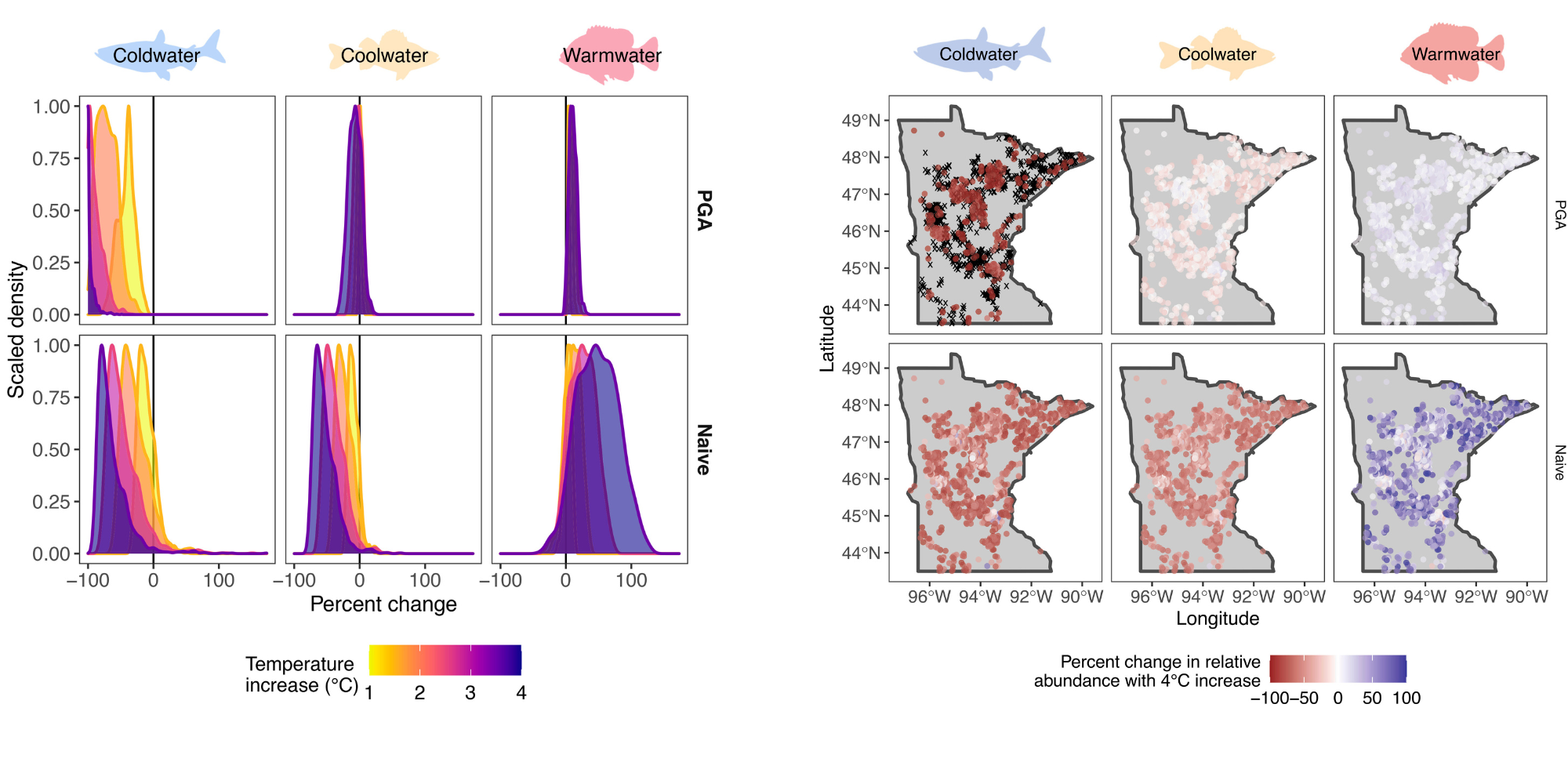Climate change is a significant threat to some of the most ecologically and culturally important fish in the Midwest. Quantifying the responses of fish to climate change in our region is necessary to inform habitat protection, restoration, and other management activities, but is challenging because it often means estimating responses to temperatures that the animals have not yet experienced and scientists have not yet observed.
A new statistical model developed by researchers on a Midwest Climate Adaptation Science Center-funded project offers an innovative way forward.
The model, called the “Physiologically Guided Abundance Model,” or PGA Model, combines observations of species abundance and environmental conditions with laboratory-derived data on the physiological response of cold-blooded animals to temperature in order to predict species geographical distributions and abundance in response to warmer temperatures. It improves estimates of habitat suitability and extinction probability for fish – and other cold-blooded animals – as the climate changes.
The University of Minnesota’s Gretchen Hansen, a coauthor on the study, suggested that models that do not include physiological preferences may lead to underestimations of the risk climate change may pose to cold-adapted species.
“We showed that temperature-driven changes in distribution, local extinction, and abundance of cold-, cool- and warm-adapted species varied substantially when physiological information was incorporated into the model,” she said. “The PGA model provided more realistic predictions under future climate scenarios compared with traditional approaches and has great potential for more realistically estimating the effects of climate change on cold blooded species.”

Right: Predicted percent change in relative abundance for cold-water (cisco), cool-water (yellow perch), and warm-water (bluegill) fish species using the PGA (Top row) and naive (Bottom row) models for Minnesota lakes with a 4 °C mean July water temperature increase. Black × represents lakes with a predicted posterior probability of extinction > 90%. Silhouette images are from http://phylopic.org/ under creative commons license.
This study was published April 3, 2023, in Proceedings of the National Academy of Sciences. Authors include Tyler Wagner, Pennsylvania Cooperative Fish and Wildlife Research Unit; Christopher Custer, Penn State; Erin Schliep, North Carolina State University; Joshua North, Lawrence Berkeley National Laboratory; and Gretchen Hansen, Holly Kundel, and Jenna Ruzich, University of Minnesota.
Read more about the associated MW CASC project here.
